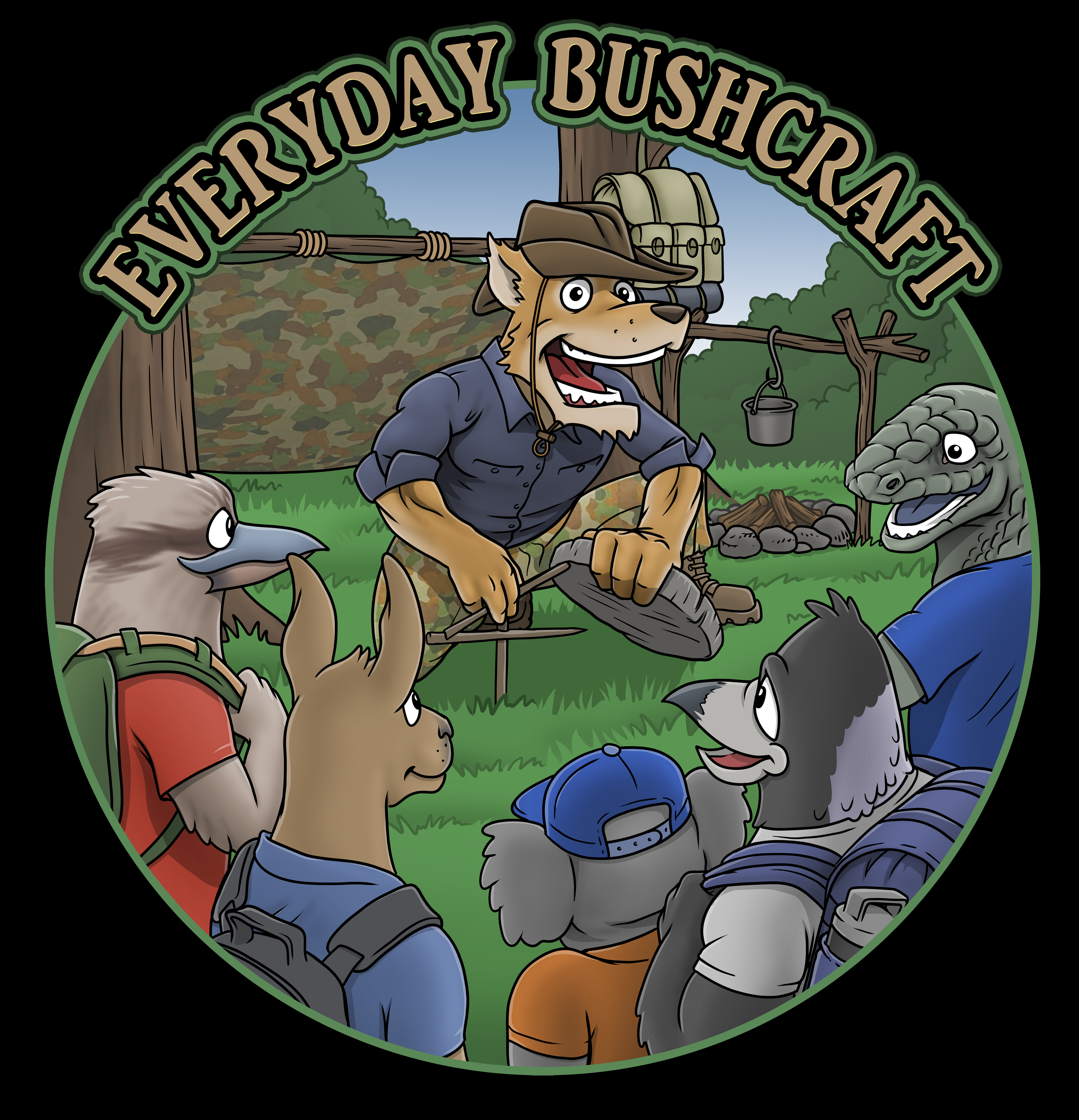
The Three Layers of Survival part 1
- gbucknell

- Oct 6
- 4 min read
The Three Layers of Kit: A Bushcrafter’s Guide to Being Ready for Anything
When soldiers head into the field, they don’t just throw gear in a bag and hope for the best. Every item has its place, and every layer has a purpose. The military system of three layers of kit is designed so that, no matter what happens, you can survive, move, and regroup.
For us in the bushcraft world, that same principle works perfectly. Whether you’re out for a walk, teaching kids about the outdoors, or on a weekend solo camp, layering your kit keeps you efficient, mobile, and safe — especially when things go wrong.
Why Layers Matter
In the bush, gear isn’t just about convenience — it’s about options. The idea of layering is simple:
Layer 1: Always on you — the “last ditch” essentials.
Layer 2: Your working kit — for day movement and tasks.
Layer 3: Your sustainment layer — for longer stays and rest.
Each layer supports the others, but can stand alone if needed. Lose one, and you still have the ability to survive with the next. That’s not just organisation — that’s resilience by design.
Layer 1 – On Belt / Pockets (Always on You)
These are your essentials for survival. They stay on your body, even if you put down your pack. Think about what you’d want if you got separated from your gear, fell in the river, or had to move fast.
You’re covering the priorities: cutting, fire, navigation, and signaling.
Typical items include:
Fixed blade knife (bushcraft style, full tang)
Folding knife or multitool
Ferro rod & striker (firesteel)
Bic lighter (redundancy)
Small LED torch (headlamp if possible)
Compass (baseplate style)
Map (in waterproof sleeve or ziplock)
Whistle
Small first aid kit (band-aids, blister pads, pain relief)
Water purification tablets (in small container)
Bandana or shemagh (filter, sling, head cover, towel)
Small notepad & pencil
Emergency snack (high-calorie bar)
Why it matters:
This layer is your “lifeline.” If everything else fails, this is what keeps you alive long enough to be found or to find your way out. Military doctrine calls it your First Line Gear — and it’s the one you never take off.
Layer 2 – LBE / Chest Rig / Haversack / Daypack (Working Kit)
Layer 2 is your working kit — the one you grab for a day trip away from camp. It’s light, efficient, and designed for mobility. Think of it as your 24-hour kit: everything you need to keep moving, building, and adapting.
Typical items include:
Canteen or water bottle (1 L) with nesting metal cup
Fire kit (ferro rod, lighter, tinder tabs, waterproof matches)
Sharpening stone or pocket sharpener
Cordage (15–20 m paracord & bank line)
Small tarp or poncho (for shelter or rain cover)
Folding saw
Small med kit (trauma bandage, antiseptic wipes, tape)
Energy snacks (nuts, jerky, chocolate)
Signal mirror
Space blanket / emergency bivvy
Gloves
Headlamp with spare batteries
Bug repellent & sunscreen (seasonal)
Small repair kit (duct tape, safety pins, needle & heavy thread)
Why it matters:
This is your mission kit — what keeps you functional and effective. You can travel light but still have the ability to make fire, find shelter, and respond to emergencies. Soldiers call this the Second Line — what they fight, move, and survive with.
For bushcrafters, it’s the gear that keeps the adventure going without the burden of the full pack.
Layer 3 – Rucksack (Sustainment Kit)
The third layer is your base of operations — your sustainment gear for overnight or extended stays. It’s designed for comfort, rest, and self-sufficiency.
If Layers 1 and 2 keep you alive, Layer 3 helps you live well in the wild.
Typical items include:
Main shelter system (tarp & ridgeline, tent, or hammock setup)
Sleeping bag or wool blanket
Bivy bag
Ground mat
Extra clothing (socks, underwear, base & insulating layers)
Larger first aid kit (bandages, meds, wound care)
Food (1–3 days, mix of ready-to-eat & cookable)
Cooking system (stove, fuel, pot, spork)
Bulk water carriage (bladder or bottles)
Water filter (Sawyer, Lifestraw, etc.)
Extra cordage (50 m + bank line/paracord)
Axe or hatchet (for firewood and campcraft)
Additional navigation tools (detailed maps, backup compass)
Camp tools (carving knife, awl, folding shovel)
Small fishing/foraging kit
Hygiene items (toothbrush, soap, sanitizer, toilet paper)
Notebook & pencil (for journaling or tracking resources)
Pack rain cover
Spare batteries / power bank
Seasonal extras (mosquito net, winter gear, sun hat)
Why it matters:
Your rucksack is your sustainment base — the one that lets you stay longer, rest deeper, and recover stronger. In emergencies, it’s also your resupply point. Soldiers would call this Third Line Gear — where endurance and logistics meet.
The Philosophy Behind the Layers
Each layer represents a mindset:
✅ Layer 1 – Survival: Never leave it behind.
✅ Layer 2 – Workhorse: Keeps you mobile and capable.
✅ Layer 3 – Sustainment: Provides comfort and longevity.
Together they create resilience in depth — a system that works even when one part fails.
That’s the heart of bushcraft: preparation, adaptability, and calm under pressure.
In an emergency, your gear layers buy you time. Time to think, to act, and to survive.
Final Thoughts
Bushcraft isn’t about owning the most gear — it’s about knowing how to use it, and how to carry it smartly.
The three-layer system ensures you’re never caught off-guard, whether you’re on a short trail or deep in the backcountry.
So next time you head out, ask yourself:
If I had to drop my pack right now — could I still survive?
If the answer’s yes, you’ve built your kit right.
Because in the bush, as in life — simplicity, structure, and preparation are your best survival tools.









Comments